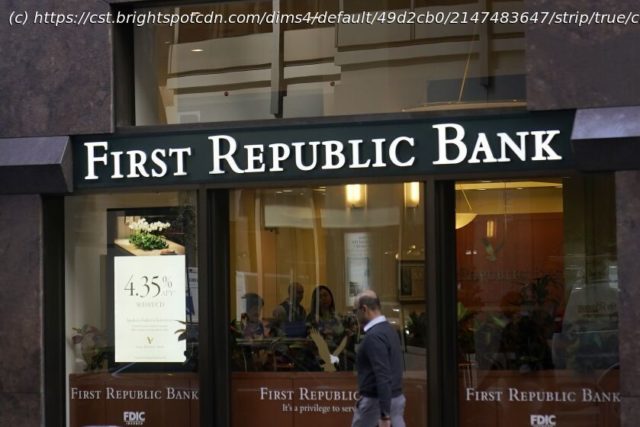In the second-largest bank failure in U.S. history, officials seize First Republic Bank, selling its deposits and most of its assets. It’s the third midsize bank to fail in two months.
Regulators seized troubled First Republic Bank early Monday, making it the second-largest bank failure in U.S. history, and promptly sold all of its deposits and most of its assets to JPMorgan Chase in a bid to end the turmoil that has raised questions about the health of the U.S. banking system.
It’s the third midsize bank to fail in less than two months. The only larger bank failure in U.S. history was Washington Mutual, which collapsed at the height of the 2008 financial crisis and was also taken over by JPMorgan in a similar government-orchestrated deal.
“Our government invited us and others to step up, and we did,” said Jamie Dimon, chairman and chief executive of JPMorgan Chase.
First Republic’s 84 branches opened on Monday as branches of JPMorgan Chase, which acquired the bank’s $92 billion in deposits and $203 billion in loans and other securities. The bank’s shareholders are likely to be wiped out as part of the deal.
Dimon said in a conference call with both reporters and investors that he believed “this part of this [banking] crisis is over.” Other midsize banks reported their results last week, and the vast majority of them showed deposits had stabilized and profits remained relatively healthy. The outlier was First Republic.
Before this year, First Republic was the envy of the banking industry. Its well-appointed branches served warm cookies to its clients — who were almost exclusively the rich and powerful. Its bankers lured in wealthy clients with low-cost mortgages and attractive savings rates in order to sell them on higher-profit businesses like wealth management and brokerage accounts. In return, the wealthy rarely defaulted on their loans and parked substantial sums of money in the bank that could be lent elsewhere.
But that business model of catering to the rich became a liability with the collapse of Silicon Valley Bank and Signature Bank.






